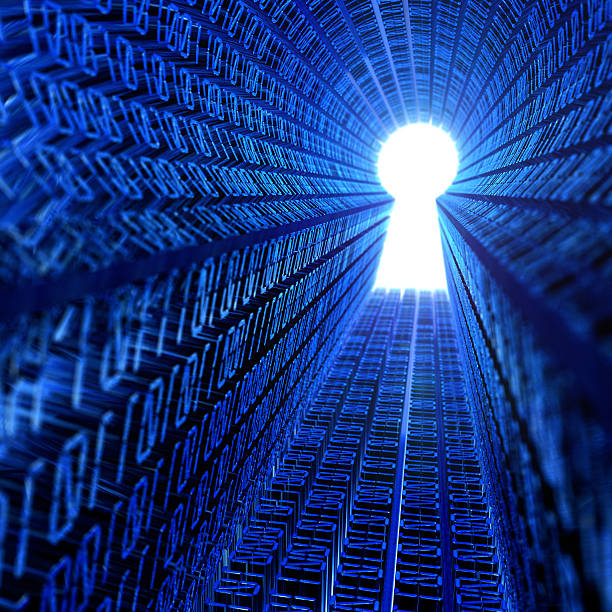
End-to-End Encryption (also known as E2EE) is an important shield around our online communications. In an era dominated by the rapid exchange of information, the safeguarding of our private and sensitive information became imperative.
End-to-end encryption is an important digital security model that ensures the confidentiality and integrity of our digital communications. It’s a method of having secured conversations without the interference of a third party; i.e. It ensures that only intended recipients can decipher the encrypted content while thwarting any prying eyes attempting unauthorized access.
This foundational technology not only enhances privacy but also strengthens trust in digital communication channels. Thereby forming an invisible yet formidable barrier against the ever-present threats of cyber intrusion.
Many well-known messaging service providers, such as Facebook, WhatsApp, and Zoom, implement end-to-end encryption (E2EE). However, the adoption of E2EE by these providers has sparked controversy, as it complicates their ability to share user information with authorities. Additionally, this technology potentially enables private messaging among individuals engaged in illicit activities.
In this article, we will delve into the intricacies of E2EE and everything you need to know about it.
How Does End-to-End Encryption Work?
At the foundation of end-to-end encryption is cryptography, a method for protecting information by transforming it into an unreadable format called ciphertext. This means that each user involved creates a pair of keys – a public key and a private key. The public key is shared openly, while the private key remains a closely guarded secret. This key pair forms the linchpin of E2EE, laying the groundwork for secure communication.
When your encrypted message is in transit, the ciphertext remains resilient against any attempts at eavesdropping or unauthorized access. So when the encrypted message enters the intended recipient’s private key (the only key capable of unraveling the encryption), the recipient effortlessly decrypts the message, restoring the original content. The decryption process is seamless for the intended recipient, forming the final link in the chain of secure communication.
Historical Development Across End-to-End Encryption
The historical evolution of End-to-End Encryption is a captivating journey of continuous evolution of cryptographic techniques and the growing need for secure digital communication.
A pivotal breakthrough occurred with the introduction of public-key cryptography in the 1970s, revolutionizing encryption by allowing the creation of public and private keys. Then the introduction of Pretty Good Privacy (PGP) in 1991 marked a turning point, making end-to-end encryption accessible to the masses and revolutionizing secure email communication.
Furthermore, as internet usage increased, the development of SSL (Secure Sockets Layer) and later TLS (Transport Layer Security) protocols played a crucial role in securing online transmissions. The 21st century began witnessing messaging apps embracing E2EE, with platforms like WhatsApp and Signal prioritizing user privacy.
However, this adoption has sparked debates and legal challenges concerning the delicate balance between privacy and security. The historical development of end-to-end encryption is a testament to the continuous interplay between technological advancements, security imperatives, and the evolving landscape of digital communication.
What Are The Benefits of End-to-End Encryption?
End-to-end encryption is a powerful tool that not only provides several benefits to enhance and promote digital security, but also helps in building user trust, complying with privacy regulations, and mitigating various security risks. Discussed below are some of them:
- Privacy Protection: End-to-end encryption ensures that only the intended recipients can decrypt and access the content of a message. This guarantees a high level of privacy, as even service providers are unable to view the message in its unencrypted form.
- User Trust and Confidence: The implementation of end-to-end encryption incorporates trust among users, assuring them that their conversations and data are secure. This is particularly crucial in the digital age, where concerns about data breaches and privacy violations are prevalent.
- Security Against Interception: The encryption process in end-to-end encryption makes it exceptionally challenging for third parties, including hackers or unauthorized entities, to intercept and understand the content of the communication.
- Secure File Sharing: Beyond messaging, end-to-end encryption can be applied to file-sharing services, ensuring that files exchanged between users remain confidential and protected from unauthorized access, enhancing the overall security of collaborative efforts.
- Prevention of Mass Surveillance: End-to-end encryption acts as a wall against mass surveillance, ensuring that even if data is intercepted, it remains indecipherable without the proper encryption keys. This is particularly relevant in the context of concerns about government or institutional surveillance.
Challenges And Criticisms
Although E2EE provides privacy and secures digital communications, it doesn’t guarantee that it is not without shortcomings. However, proponents argue that the benefits of E2EE in terms of user privacy and security outweigh the concerns.
Therefore, striking the right balance between privacy, security, and legal considerations remains a common challenge in the ongoing discourse surrounding E2EE. Here are some common setbacks associated with E2EE:
- Accessibility for Law Enforcement: E2EE has faced criticism from law enforcement agencies and governments for impeding their ability to access information for criminal investigations. This is one of the major reasons for debates and discussions on privacy rights and public safety.
- Implications for Content Moderation: E2EE can complicate content moderation efforts on communication platforms, because without the ability to access the content of messages, platforms may struggle to detect and address harmful or abusive content effectively.
- Incompatibility with Backup Services: E2EE can be at odds with cloud-based backup services. Since the data is encrypted end-to-end, it becomes challenging for these services to perform seamless backups without compromising the encryption principles.
Conclusion
After an overview of what End-to-End Encryption (E2EE) entails, it is safe to say it stands as an indispensable guard in the ever-evolving landscape of digital communication. E2EE remains a cornerstone in the ongoing dialogue on how to navigate the intricate terrain of digital interactions while safeguarding the fundamental right to private communication.
Right from its historical development to its challenges and criticisms, the undeniable benefits of E2EE, such as enhanced privacy, security against interception, and user trust, emphasize its important role in the modern era.